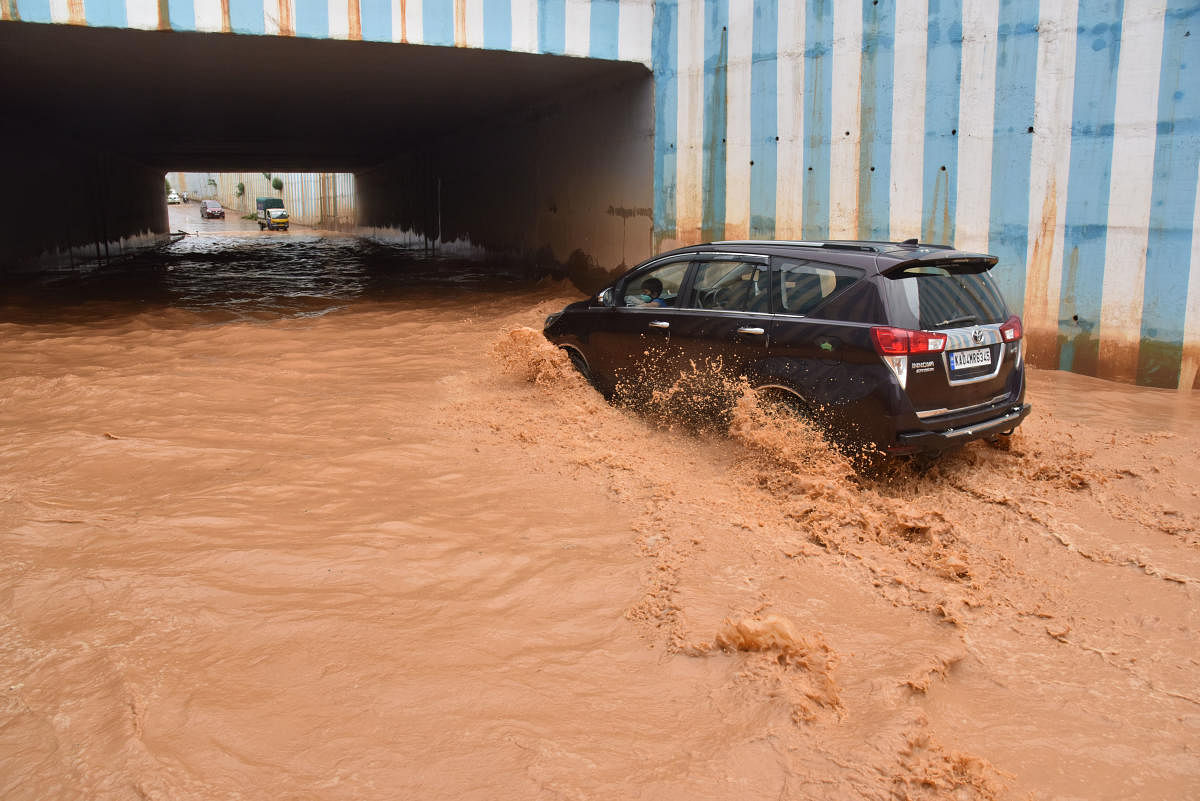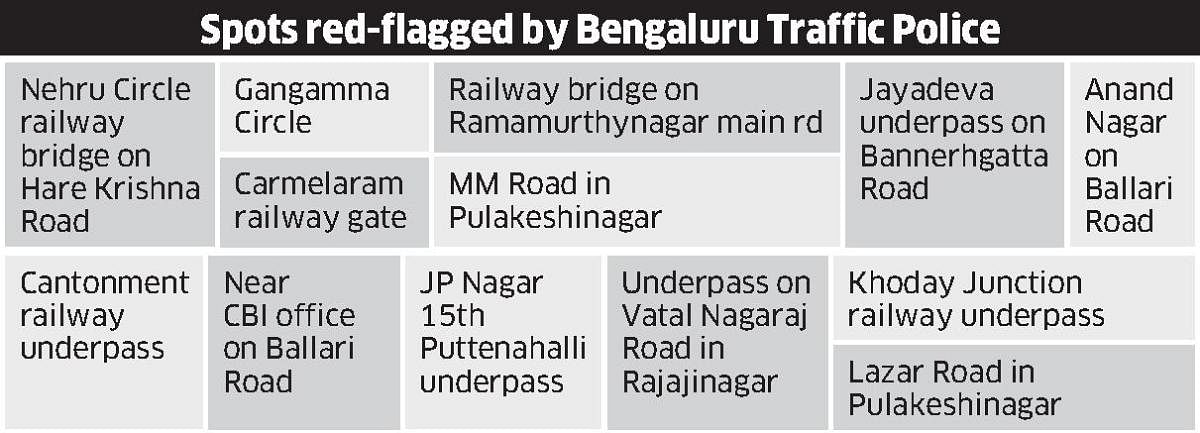

Viral images of two vehicles plunged in flooded underpasses have shoved civic authorities into action.
In one of them, taken at the Doddanekundi underpass, a school bus was seen submerged in water, while in another photograph, a driver was seen standing on top of a submerged car and shouting for help at the Kodigehalli underpass.
Despite the civic body’s efforts to fix flood-prone underpasses, many remain waterlogged.
A recent survey by the Bengaluru Traffic Police (BTP) has revealed that the city has 54 flood-prone roads. Linking pictures and geotags of these locations, police shot off a letter to the BBMP with a request to carry out emergency repair works. The list includes at least a dozen underpasses.
When the heavens open, grade separators in Okalipuram, Panathur, Ramamurthynagar, Vatal Nagaraj Road in Rajajinagar, JP Nagar and Carmelaram and other places submerge in several feet of water. These roads reveal faulty designs and inferior drainage systems. As an immediate measure, the civic body has deployed motor pumps to drain water and restore traffic.
Engineering challenges
The Bruhat Bengaluru Mahanagara Palike’s (BBMP) engineering solutions to these underpasses work well if there is a lake or a waterbody nearby.
Senior officials said the civic body creates a ‘lead-off’ drain — an underground pipeline — from the lowest point of the underpass to the waterbody by studying the gradient level to drain the water naturally.
A similar pipeline was fixed at the infamous Kodigehalli railway underpass to drain out water two years after it was inaugurated. The civic body is confident that this underpass will not flood as bad as it did before.
The BBMP, however, adopted a different approach to fix the issue at the Doddanekundi underpass by constructing retaining walls and blocking the water inflow. Officials say the approach would work only with a lake or a pond nearby at the right gradient level.
“We could not build a lead-off drain at Okalipuram as planned as there were houses belonging to the economically weaker section. Hence, we had to take a different direction but that involved blasting rock elements,” a BBMP official said.
The lead-off drain has silt trap and inspection chambers at regular points for maintenance purposes. But officials overlook the maintenance aspect, as a result of which the problem is never quite solved. The Puttenahalli underpass, for instance, floods because the drains are not cleared of silt.
Who is to be blamed?
Among the BTP’s list of flood-prone places were railway underbridges (RUBs) built years ago. “The Railways use push-box technology to build RUBs. This gives little space to create drains on both sides. The Doddanekundi underpass is one such example,” said Clement Jayakumar, who is actively working with the BBMP in Mahadevapura.
“It is also difficult for the BBMP to pump out water as motor pumps run out of power whenever it rains,” Jayakumar said.
In response, Shyam Singh, Divisional Railway Manager, South Western Railway, Bengaluru division, said all recently built RUBs have adequate drainage arrangements.
“We have made corrections in the design. Whichever underpasses had issues, they are being corrected,” he said, adding that the BBMP is in-charge of maintaining the RUBs.
Sanjeev Dyamannavar, member of the advocacy group Praja RAAG, said commuters continue to face hardship when the underpasses get flooded. “The BBMP must publish the helpline number on all underpasses so that motorists can alert officials immediately,” he said.